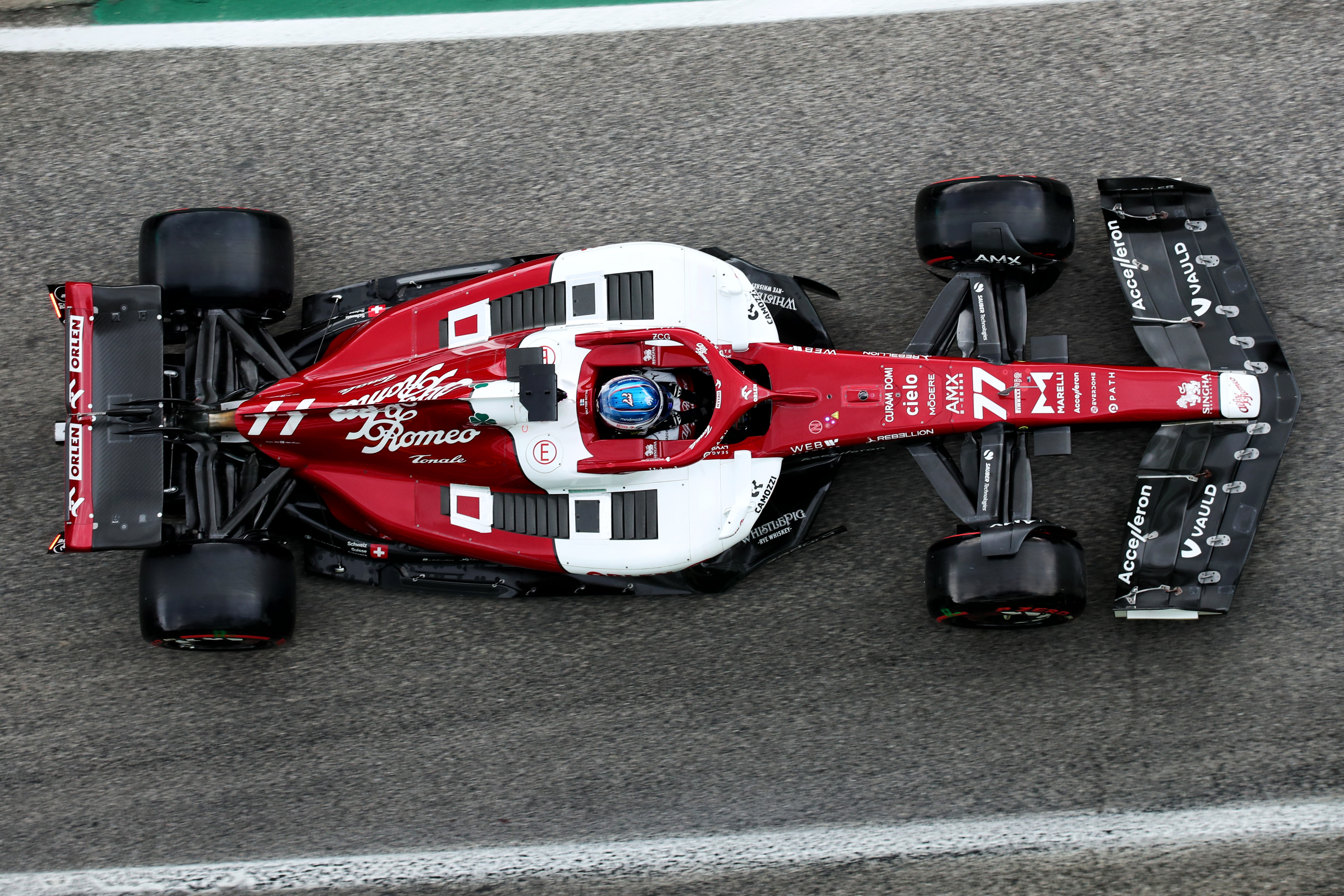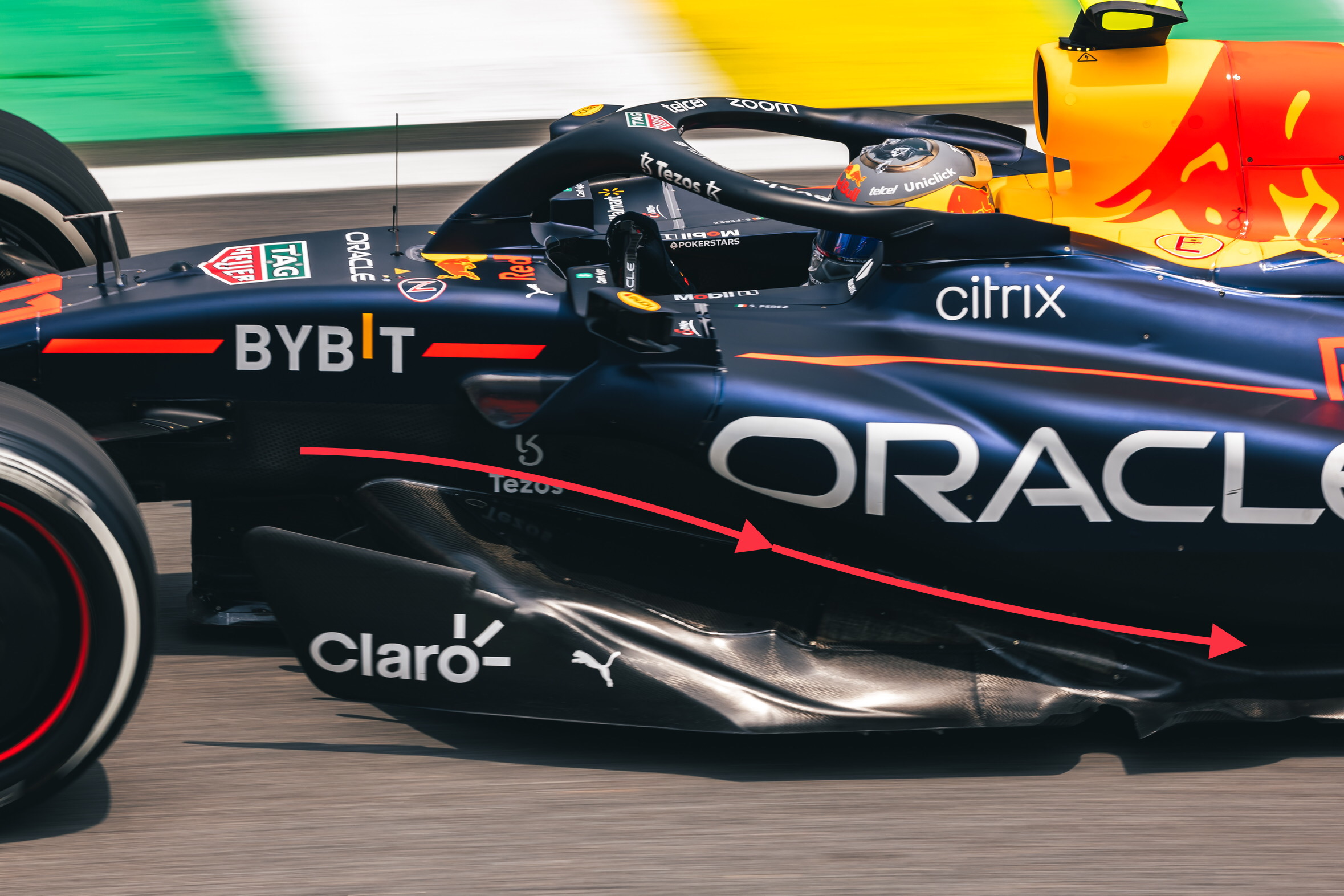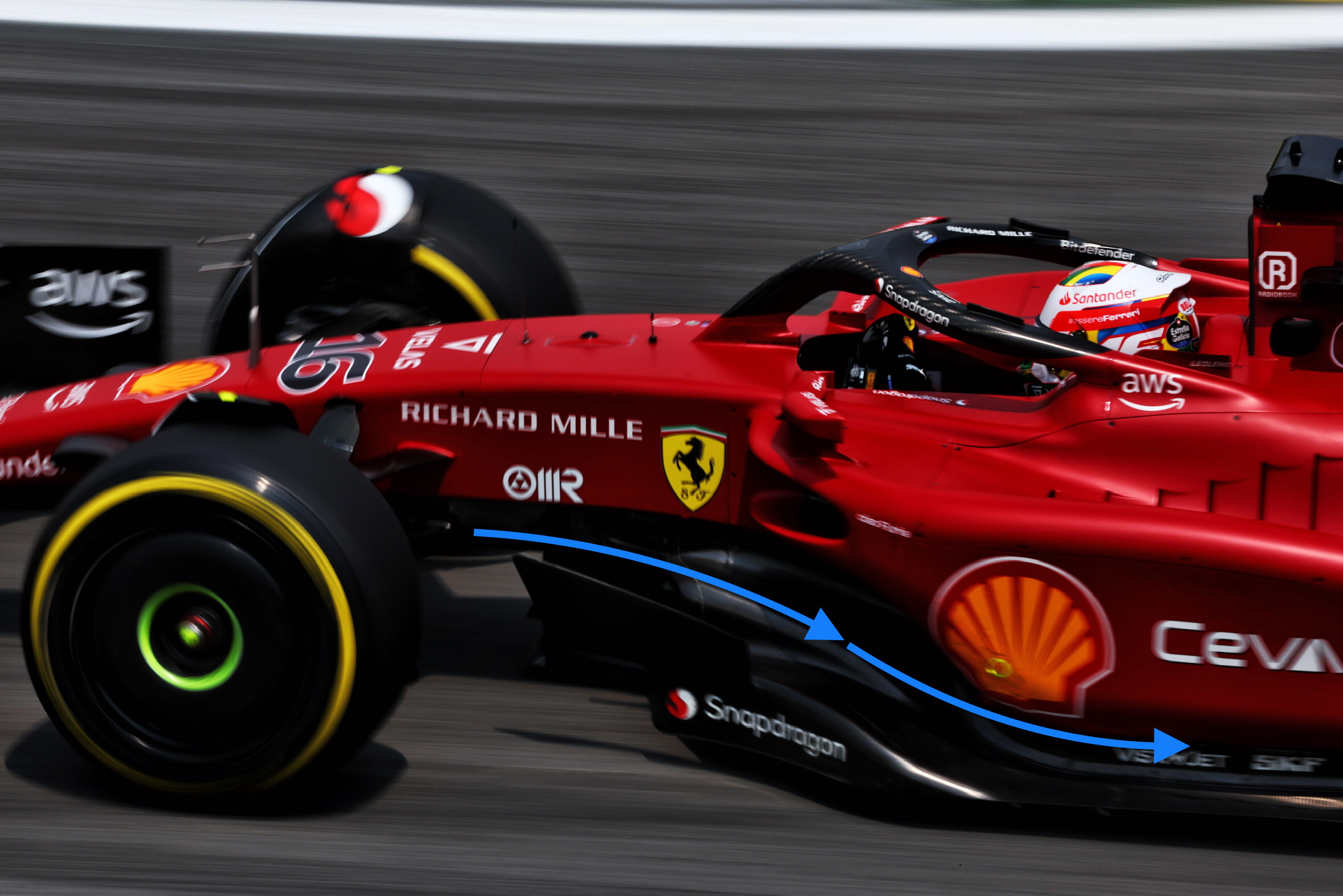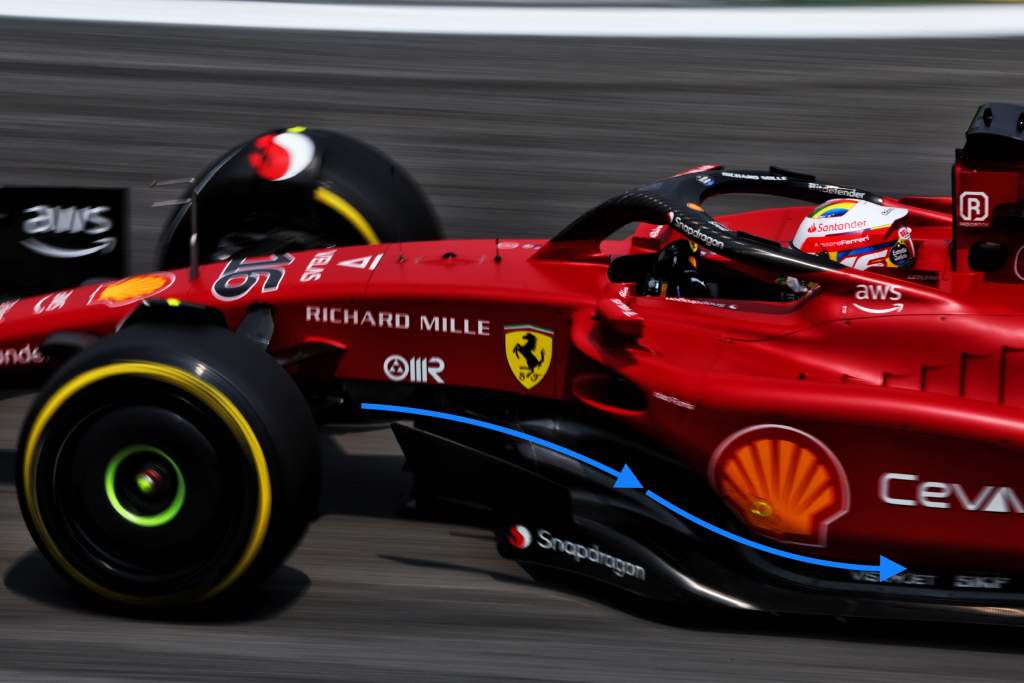Up Next

The Formula 1 regulation changes for 2023 are all about reducing the potential for porpoising and containing the vertical oscillations that gave the drivers such a beating at times last year. The main change is raising the floor edges by 15mm, but it’s going to have a wider impact on car design as teams re-optimise around such a significant adjustment.
The change applies to roughly one metre in front of the rear tyre. The lowest part of the underfloor tunnels has also been raised by 10mm as part of this change.
If you simply applied these changes to last year’s car then they would reduce both the downforce created by the underfloor and its sensitivity to ground clearance. That would have a clear effect on reducing the porpoising. The FIA’s Nikolas Tombazis has said this will cost roughly half a second, although this is before 500-odd engineers spread across the teams set about re-optimisation and development of that area.
Obviously, there will be visual changes to the sidepods as each team strives to get their head around what is the best concept. But the visual part is not always the major performance driver, it is often the parts that you can’t quite see so easily and that’s especially the case with these ground effect cars and their powerful underfloors.
The rear section of the floor side being raised means you will be trying to work the front corner of the floor harder. This means that the leading-edge height of the floor and the location and curvature of the four turning vanes that we only see the front of will have much more influence on the performance of that area and in turn the complete underfloor assembly.
To work this area of the floor harder you need to turn more of the inlet flow outwards. This will generate a lower pressure under that section of the underfloor, and also the outwash flow generated by these tuning vanes will reduce the pressure at the edges of the underfloor further rearward where the sides have been lifted by 15mm. It also means that the diffuser will be drawing more of its flow from nearer the centre of the floor’s leading edge, so further away from the outside world at the outer edges of the underfloor.
The other critical area is opening up the gap between the front wheels and the leading edge of the underfloor. Managing the turbulence created by open-wheel cars is critical to the performance of the underfloor. Under the pre-2022 regulations, teams achieved this with the very complex bargeboard arrangements but they are a no-no in the new rules. However, that doesn’t stop aerodynamicists from applying the same logic in a different way.

With the maximum wheelbase set at 3.6 metres, you can’t simply move the front wheels forward away from the sidepod outer corner. Most teams last year were on or near that maximum, with only Alfa Romeo opting for a shorter car.
There are benefits to a shorter car, as most teams struggled to get down to the weight limit. It changes as you go through the car, but just taking the 796kg minimum weight in 2023 and the 3.6m wheelbase gives you a weight-to-length ratio of 2.21kg/cm. That means it’s well worth investigating the downforce loss for a slightly shorter car. If you are over the minimum weight limit, five centimetres shorter could save you up to 11kg and that is around 0.3 tenths of a second per lap, every lap. That’s probably equivalent to 25-30kgs of zero-drag downforce at 250km/h (155mph), so not to be sniffed at. As I often say, it’s about making the correct compromise very early in your design specification.
So to get the best from a slightly shorter wheelbase and a solution to moving the front corner of the sidepod further rearward to open up that gap to the front tyre will be high on the priority research list, or at least it would be on mine.
It’s not easy to achieve that because of the location of the side-impact structures. Mercedes found a novel way by mounting the upper forward structure in a fairing that also served as the rear-view mirror mounting, so if there is the will there is normally a way to achieve something different. You just have to be careful that you comply 100% with the regulations, and now even the intent of the regulations.
The undercut that we see on the front corner of the sidepod on all the cars, but especially the Red Bull and the Ferrari, is the area between the two side-impact structures. Mercedes didn’t have this undercut, it had more of a tall triangular radiator inlet close to the side of the chassis. This, combined with the novel location of the forward upper side impact structure allowed Mercedes to have probably the biggest gap to the front tyre. But the performance didn’t back up this concept.

I’m not a fan of allowing the spillage when the radiator can’t flow as much airflow as is being presented to it being connected to the leading edge of the underfloor. If you have pressure on the radiator inlet and low pressure under the floor, having these two close together means there is only one way that high pressure will escape. That’s straight under the car, reducing the performance of the underfloor.
If you can, as Red Bull and Ferrari plus a few others did, create a body profile that keeps that spillage away from the low pressure under the car then the underfloor performance will be more consistent.
This flow will make the performance of the underfloor inconsistent. Having the undercut allows this flow to pass down the sides of the car without causing any real disruption to the main flow structure. It also means that a large percentage of the sidepod surface is further away from the front tyre.

If you just take the undercut profile and draw a section line through this area, the Red Bull was the deepest. However, on the Ferrari it was much more aggressive at the trailing edge. This curvature, working with the flow generated by the vertical turning vanes under the floor, should help to seal the floor going rearwards. This is the area where I think we will see different aerodynamic solutions in 2023.

One thing you need to be mindful of is the weight distribution. Within the regulations, this is defined fairly tightly. Here’s the full regulation for 2023:
ARTICLE 4: MASS
4.1 Minimum mass
The mass of the car, without fuel, must not be less than 796kg at all times during the Competition.
4.2 Mass distribution
With the car resting on a horizontal plane the mass measured at the front and rear axles must not be less than the mass specified in Article 4.1 factored by 0.445 and 0.540 respectively at all times during the qualifying practice session. Rounding will be to the nearest 0.5kg.
Taking those axle minimum weights into account means the weight distribution can be varied between 44.5% and 46% front load. One of the challenges is to keep this as stable as possible between full and empty fuel tanks, or at least to make sure it moves with varying fuel loads in the direction that gives the best and most consistent balance.
It’s this weight distribution movement that plays a big factor in cars being good in qualifying and less so in race conditions. Normally, you would run more front-wing load in qualifying, meaning forward centre of aerodynamic pressure to help get the front tyres working. Then, for the race, you would reduce that front wing angle to protect the rear tyres for longer.
But if the weight distribution is moving in the opposite direction (ie rearward when fuel is added) it will play havoc with the mechanical balance of the car and, in turn, to achieve a balance you will need to reduce the front wing load more to try to reduce the rear tyre degradation.
If I was setting a direction for the research of my 2023 car, it would be to look at a slightly shorter wheelbase – say 3.55 metres to save some weight – and find a solution to making the front section of the floor work harder while increasing the gap to the front tyre.
Let’s see what the new cars bring us when we eventually see them appear. It likely won’t be until the last day of the Bahrain test, or even the first day of the opening race weekend, that we see the full picture as the teams will want to keep their latest ideas secret until the last minute.







